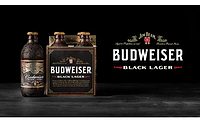Specialty beverages, flavor exploration influences beverage menus
Functional ingredients, flavored spirits among trends within foodservice, on-premise

In today’s consumer-goods-driven market, shoppers have more and more opportunity to customize purchases. As consumers get more specific about what they want, brand owners are offering a broad set of products to meets those desires. For foodservice operators, new, specialty beverages are helping these innovators deepen their offerings to consumers.
“Functional ingredients continue to be a trend as they allow customers to tailor their beverages to their health and wellness needs,” says Hannah Spencer, foodservice analyst for Chicago-based Mintel. “In 2019, there is a functional smoothie to appeal to almost every health and wellness concern out there. Whether a consumer wants to perk up, calm down, brighten their skin, or improve hydration, there is a smoothie to help them meet their goal.
“Consumers’ increasing interest in functional ingredient benefits is reflective of the larger shift in the health-and-wellness space toward leading a more holistic lifestyle,” she continues. “By highlighting the functional benefits of existing smoothie ingredients and offering trending ingredients such as collagen peptides, operators can appeal to a wide range of customers seeking natural alternatives.”
Spencer adds that although foodservice smoothies are leading the channel in terms of beverage innovation, it is specialty coffee that is leading the charge when it comes to flavor and preparation methods.
“Adding new flavor profiles and preparation methods is an effective way for operators to update classic specialty coffee beverages,” she says. “For example, for fall 2018, Starbucks released an updated version of its seasonal Maple Pecan Latte to include cold foam to offer customers a refreshing treat.”
No matter what the functionality, wellness will continue to be a driver for new beverages within foodservice outlets, experts note.
“As wellness continues to be a key consumer trend and driver for beverage purchasing, adaptogens including CBD-infusions are becoming more widely available in the mainstream,” Spencer says. “Stress-reducing compounds known as adaptogens are found in a number of ingredients being used in smoothies, including maca powder and tart cherry juice.
“Adaptogen-rich ingredients are generally a natural source of melatonin and help reduce inflammation throughout the body, promoting relaxation and sleep,” she continues.
Spencer prognosticates that lesser known adaptogens likes ashwagandha, holy basil and reishi mushrooms increasingly will appear on beverage menus as well as a more well-known adaptogen: cannabidiol.
“With loosening laws on cannabis, the adaptogen CBD (cannabidiol) oil is especially primed to increase on smoothie menus,” she explains. “CBD is a non-psychoactive compound found in hemp that is said to improve sleep quality, reduce inflammation, and promote overall relaxation. The usage of CBD oil in smoothies may appeal to a wide range of consumers who want a drink that provides functional relaxation but do not want the psychoactive effects of THC.”
The latest attractions
Although functional formulas is one way to entice consumers, operators are experimenting with a plethora of options in order to engage the modern consumer.
“Restaurant establishments are always trying to change their offerings to be aligned to what they believe is a focus for consumers,” says Max Heinemann, client manager of wine and spirits at Chicago-based Nielsen CGA. “Using rarer flavors, venues are putting more interest into developing sustainable beverage programs, increasing the use of technology to improve consumer experiences, adding the social media aspect to beverages, be it visually or interactive, as well as providing discounts or other motivators to attract consumers.”
Similar to the motivations prompting consumers to seek functional beverages from non-alcohol products, health and wellness is influencing the alcohol on-premise market.
According to a spring 2019 insights from Nielsen CGA, more than half — 54 percent — of U.S. consumers made a conscious decision to abstain from alcohol in the past 12 months. When broken down, the 21- to 34- year-old demographic saw the highest incidence with 66 percent making such a decision.
The market research firm found that from the consumers who opt to drink less frequently or abstain from alcohol consumption, health is the top reason with 50 percent naming that reason followed by losing weight with 28 percent indicating as such.
Although the 21- to 34- year-old demographic might see the highest incidence of people abstaining, those who do consume alcohol also are the most willing to try new flavors across various spirits categories — whiskey, tequila, gin, brandy and cognac — especially when compared with those 55 and older, Nielsen CGA insights show.
In general, Heinemann highlights that 46 percent of on-premise consumers are open to trying new flavors with cocktails, beer, vodka, wine and rum the categories that consumers are most interested in experimenting with different flavors.
“The flavored spirit is coming back with a much better manufacturing process,” he says. “Gone are the days of incredibly artificial flavors mixed with alcohol, but rather we are seeing many more natural flavors and flavors which appeal to a wider scope of generations.”
A beverage alcohol segment that likely is to benefit from the importance placed on flavor profiles will be flavored malt beverages (FMBs).
“Flavored malt beverages will continue to rise, whilst we may see a move away from hard seltzers, an introduction of hard teas, coffees, kombuchas and other low-sugar drinks can continue the meteoric rise of the FMB category,” Heinemann says.
Heinemann expects flavor development is just one of the items on the horizon for new beverage development in the on-premise market. “[Expect] a closer partnership between chefs and bartenders,” he says. “A continuation of exploring the possibility of different flavors to attract new consumers, as well as the experience and know how to prepare for faster service to be able to provide consumers with a high-quality drinking experience without losing value in the experience of their surroundings.” BI
Looking for a reprint of this article?
From high-res PDFs to custom plaques, order your copy today!






